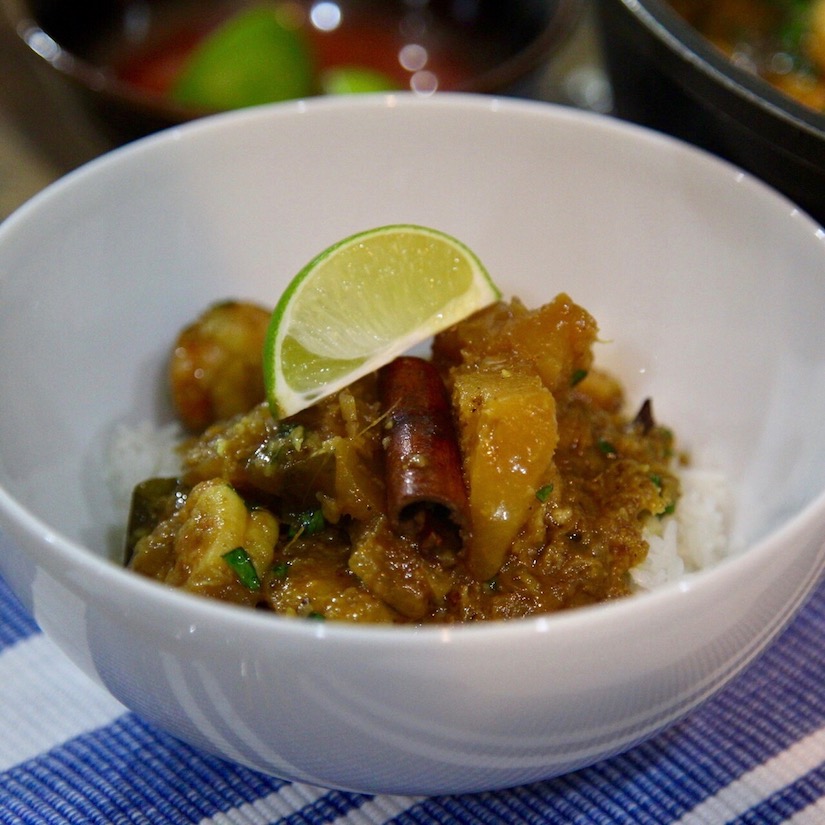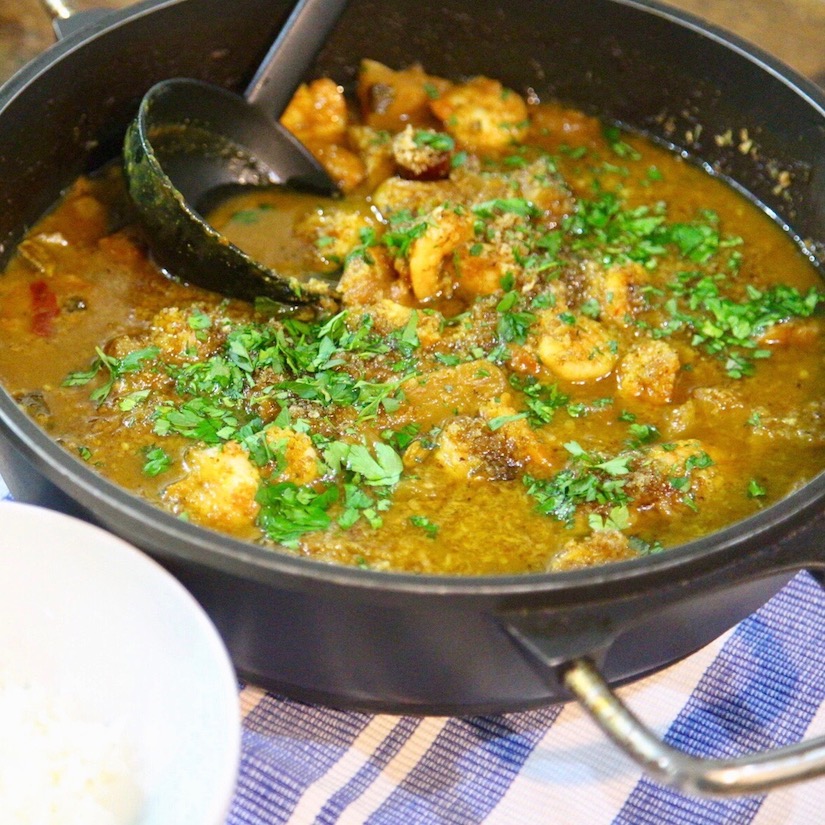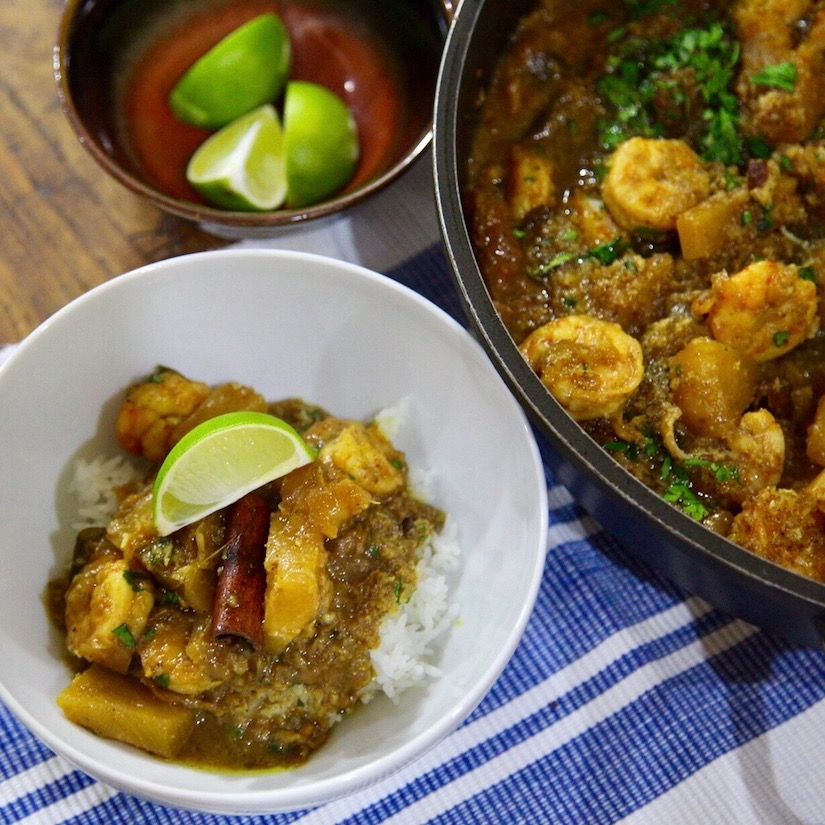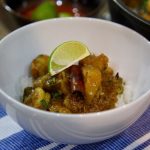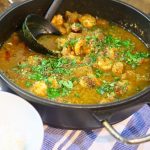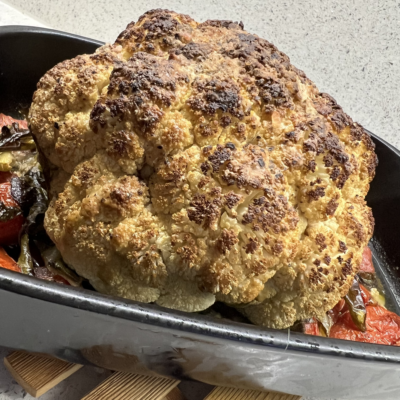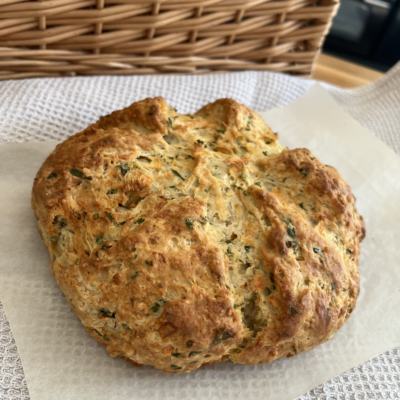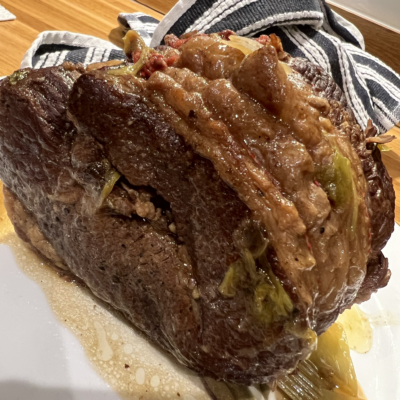Malaysian Prawns
I am sure that many of you have a favourite Malaysian curry prawn recipe, they are so easy to find, however, its the simplicity of this ‘one pot’ curry that caught my attention and made me want to cook it, adapt it for ease and then share with you.
I did not break from tradition when a pestle and mortar was called for, and do recommend to use one if you have one, but if not a food processor will suffice.
Where I did break from tradition was with the usage of a wok. If you have one GREAT but for me as I sadly can never get mine quite hot enough (using a rather ancient electric hob to date), I like to make this curry in the oven using a traditional casserole dish with a lid (see the pictures).
If entertaining, make the sauce and up to stage 12, hold off on the prawns only adding them for the final 15 minute cook before serving….this way the sauce takes on a wonderful, slow cooked depth of flavour without drying out and over cooking the prawns.
Finally, the toasted coconut does help to thicken and flavour but no need to be excessive with it. I find I never use quite all of it and any left over, I freeze to be used another day.
Ingredients
-
Toasted Coconut
-
100g fresh coconut- finely grated
-
2-4 tsp sunflower oil
-
Malaysian Sauce
-
Thumb size piece fresh ginger- peeled and finely grated
-
6 cloves garlic- papery skin removed
-
1 heaped tbsp curry powder
-
100ml sunflower oil
-
7 fresh curry leaves
-
2 cinnamon stick- broken into bits if possible
-
1 star annise
-
3 cardamon pods- whole
-
2 dried red chillies- broken into bits (optional_
-
6 cloves
-
2 small red onions- thinly sliced lenthways
-
1 tbsp tamarind paste
-
1 fresh pineapple- peeled, cored and cut into chunks
-
1 tbsp palm sugar- or soft brown sugar
-
400ml can full fat thick coconut milk
-
24 large king prawns- frozen and defrosted
-
Fresh coriander to garnish
-
Serve with boiled jasmine rice
Instructions
-
01 Prepare toasted coconut:
-
02 Finely grate the coconut and either in a wok or large frying pan, toast over a moderate heat slowly until all the coconut is an even dark 'toasted' brown.
-
03 Remove from the heat, tip into a pestle and mortar, pounding well whilst warm with the sunflower oil. Pound until well mixed. Leave to one side.
-
Prepare Malaysian sauce:
-
04 Place the grated ginger and garlic cloves in the pestle and mortar, pound to a rough pulp.
-
05 In a separate small bowl, add 150ml cold water to the curry powder and mix well to form a loose paste.
-
Cook:
-
06 Using a large oven proof pan with a lid, heat the oil to smoking hot, then throw in the curry leaves, cinnamon stick, star anise, cardamon pods and cloves, cooking for a minute or so until fragrant.
-
07 Now add the sliced onion, ginger and garlic paste, cooking for about 7 minutes or so until soft and starting to brown. Now add the curry powder (and water) paste.
-
08 IMPORTANT - cook now on a low heat until the oil separates from the paste and bubbles over the top. The bottom of the pan will stick and form a crust, so every now and then scrape the bottom with a spatula. Keep the sauce moving.
-
09 When the oil has come to the top and is well separated from the spice paste, add the tamarind paste, fresh pineapple and palm sugar. Now add the coconut milk, slowly bring to simmering point, cover and place in moderate oven for 25-30 minutes.
-
10 Once the sauce has had time to infuse, add the prawns, gently folding in to the rich sauce. Top with the toasted coconut, mixing in gently and place back in the oven for a further 15 minutes in order to cook through the prawns.
-
11 Once the prawns are cooked, remove from the oven, check the seasoning of the sauce (add if necessary) and serve immediately with a scattering of fresh coriander and freshly boiled white jasmine rice.
Notes
Traditionally Malaysian curries are made in a wok on the stove, but I recommend to use a stove to oven proof pan with a lid, as I do prefer to cook the curry sauce slowly in the oven. This way I believe it enriches the flavour and gives a more rounded, well flavoured end result. I like to add the prawns AFTER the initial cooking of the sauce, and make sure you do not 'overcook' at this stage (as prawns can become dry and hard with over cooking). Again traditionally one should use fresh RAW prawns but for ease, I use quality frozen prawns (often with tails on) defrosted before cooking. I also mention to add a couple of dried chillies for extra heat but they are optional.

